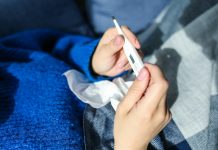May is Melanoma Awareness Month

Melanoma is a type of skin cancer involving the pigment-producing cells of the skin called melanocytes. Melanocytes are what give our skin its pigmentation. When these cells do not behave themselves, sometimes, melanoma can form. Melanoma can be lethal in some cases because it has the capability to spread to other parts of the body beyond the skin.
Because unfortunately, melanoma does not play by the rules, it is something that I worry about for my patients. Sometimes, melanoma is caused by nothing other than genetic bad luck. Other times, it could be caused by risky health choices like tanning or excessive UV exposure. Luckily, with the use of modern technology, we are getting better and better at catching melanomas early, when the success of treatment is highest.
That’s scary…How can I monitor my skin for Melanoma?
A very simple way to help protect yourself from melanoma is to schedule regular exams for skin checks, just as you would go to your primary care physician yearly for a well-check. Providers who are trained in dermatology can look at all of your spots individually and make sure everything looks safe. Many providers use a tool called a dermatoscope which uses magnification and light to enable the user to view spots better.
In addition to skin checks with a dermatology provider, monthly self-checks are an effective way to monitor for changes. And just what are you looking for? The “ABCDE” rule is helpful for determining what is potentially abnormal and warranting a visit to a professional. Dermatologists created the ABCDE rule, and each letter stands for a characteristic of a potentially abnormal lesion to be on the lookout for. They are as follows:
A: Asymmetry
Asymmetry of a lesion means that if you were to put a line down the middle of that spot, it would NOT mirror itself on the other side. Spots that are asymmetrical are more likely than symmetrical spots to be abnormal.
B: Border
If the border of a lesion looks “fuzzy” or irregular, this could be an indication of an abnormal spot.
C: Color
A soft rule of thumb for this one is that if a spot is 2 or more colors (i.e. brown, black, red, white, or even blue), it’s worth having it checked out. More colors are even more suspicious.
D: Diameter
Diameter is how big a lesion is. If a spot is bigger than a pencil eraser, it should be checked.
E: Evolving
If a spot is changing over time, It’s a good idea to have it looked at. This can be normal in some instances, however, if a lesion is getting larger over time or developing any of the aforementioned characteristics, it’s time to have it peeked at.
Other predisposing factors that increase your risk for melanoma include fairer skin, red hair, and light eyes. That being said, all skin types could develop melanoma. Just because you have a darker skin tone or “tan well” doesn’t necessarily give you immunity! In fact, Acral melanoma, a specific type of melanoma that forms on the palms, soles, and under the nails is much more prevalent in African Americans.
Can kids get melanoma?
Luckily, melanoma in kiddos is exceedingly rare. The American Academy of Dermatology estimates that about 300-400 cases of pediatric melanoma cases are diagnosed annually in the U.S. (Aad.org). You can keep kiddos safe by adhering to the same recommendations that are given to adults: At-home skin checks, using the ABCDE rule as a guide and following up with a dermatology provider or pediatrician if a spot looks a little bit off. Keeping kids safe, starting at a young age, from UV radiation also decreases their chances of developing melanoma, not just in childhood, but for life!
What can I do to protect myself and my family from melanoma?
This bears repeating. A skin check is a great way to get eyes on your spots and have unbiased monitoring of them from year to year. Self-checks, Sunscreen, sunscreen, sunscreen- at least 30 SPF or higher, seeking shade when out in the sun, sun-protective clothing, and avoiding tanning beds are all things you can do to drastically decrease your risk of melanoma.
This month, and every month, take a few minutes to care for the biggest organ of your body- your skin!













